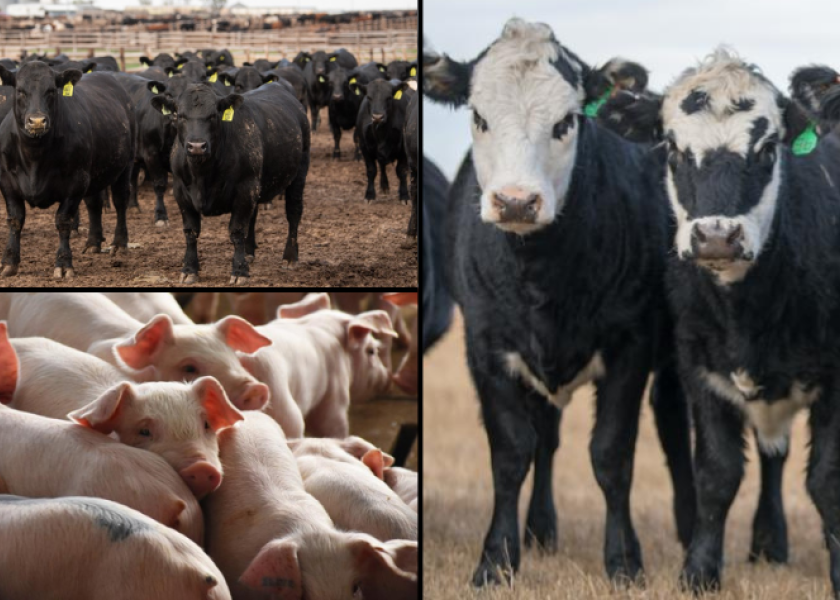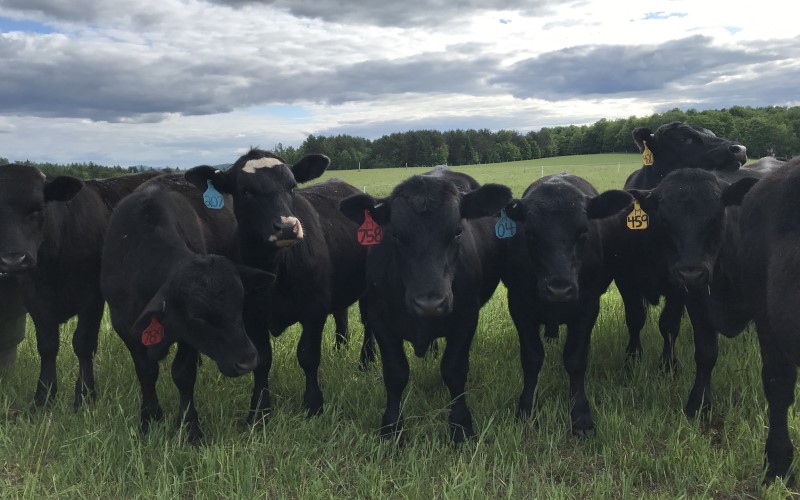Protecting Success: Bagley Risk Management Provider
Protecting Success: Bagley Risk Management Provider
Blog Article
Trick Variables to Consider When Choosing Livestock Risk Protection (LRP) Insurance
When evaluating choices for Animals Danger Defense (LRP) insurance coverage, numerous key factors necessitate careful factor to consider to ensure efficient threat management in the agricultural market. Selecting the right protection alternatives customized to your particular animals procedure is paramount, as is comprehending how exceptional costs correlate with the degree of protection provided.
Protection Options
When considering Livestock Threat Protection (LRP) insurance coverage, it is important to understand the various protection choices readily available to minimize dangers in the agricultural field. Livestock Risk Protection (LRP) insurance coverage supplies various protection choices customized to satisfy the varied requirements of animals manufacturers. Bagley Risk Management. Among the primary coverage choices is cost protection, which secures versus a decline in market costs. Producers can choose the protection level that aligns with their price threat monitoring objectives, permitting them to guard their procedures versus prospective monetary losses.
An additional essential protection option is the recommendation period, which identifies the size of time the insurance coverage is in impact. Producers can pick the endorsement period that ideal fits their manufacturing cycle and market problems. Additionally, coverage degrees and rates differ based on the kind of livestock being guaranteed, providing manufacturers the flexibility to tailor their insurance policy prepares according to their specific demands.
Understanding the various coverage choices offered under Livestock Danger Protection (LRP) insurance coverage is essential for manufacturers to make informed choices that effectively safeguard their animals operations from market unpredictabilities.
Costs Costs

Animals Threat Protection (LRP) insurance policy provides important protection choices customized to alleviate threats in the farming field, with a considerable facet to take into consideration being the estimation and framework of premium prices. When establishing premium prices for LRP insurance policy, numerous factors enter play. These include the type and variety of animals being guaranteed, the protection level selected, the current market value, historical price data, and the size of the insurance coverage duration. Insurance firms might additionally consider the area of the farm, as geographical variables can influence the general risk profile.
Insurance companies assess historical data on animals rates and manufacturing costs to identify an ideal costs that reflects the level of risk included. It is crucial for livestock producers to thoroughly examine premium prices and insurance coverage alternatives to ensure they are adequately safeguarded versus prospective monetary losses due to negative market problems or unpredicted occasions.
Qualified Animals
The resolution of eligible livestock for Livestock Risk Protection (LRP) insurance policy coverage involves mindful factor to consider of specific criteria and features. Animals types that are typically qualified for LRP insurance coverage include feeder livestock, fed cattle, swine, and lambs.
Feeder cattle, for example, are generally eligible for LRP insurance coverage if they fall within defined weight ranges. Lambs are one more group of livestock that can be thought about for LRP insurance policy, with factors such as weight and age playing a crucial duty in determining their eligibility.
Prior to picking LRP insurance for livestock, producers must carefully examine the eligibility criteria described by the insurance coverage provider to ensure their animals satisfy the needed needs for protection.
Plan Adaptability
Policy flexibility in Livestock Risk Security (LRP) insurance coverage enables manufacturers to tailor protection to fit their details demands and take the chance of management strategies. This flexibility empowers livestock manufacturers to tailor their insurance policy plans based upon variables such as the kind of animals they possess, market problems, and private risk tolerance degrees. One crucial aspect of policy adaptability in LRP insurance policy is the ability to pick insurance coverage levels that line up with the manufacturer's financial goals and risk direct exposure. Manufacturers can pick protection degrees that safeguard them against possible losses as a result of changes in animals costs, ensuring they are appropriately guaranteed without overpaying for unneeded protection. Furthermore, LRP insurance policy supplies adaptability in policy period, enabling producers to select protection periods that ideal fit their production cycles and advertising timelines. By offering Bonuses personalized alternatives, LRP insurance coverage allows producers to effectively handle their threat direct exposure while protecting their animals procedures against unanticipated market volatility.
Claims Refine
Upon experiencing a loss or damages, producers can launch the cases procedure for their Animals Risk Protection (LRP) insurance policy by without delay contacting their insurance coverage copyright. It is crucial for manufacturers to report the loss as quickly as possible to accelerate the claims procedure. When connecting to the insurance copyright, manufacturers will certainly need to provide thorough details about the event, additional reading consisting of the day, nature of the loss, and any kind of relevant paperwork such as veterinary records or market value.

After the assessment is full, the insurance policy company will certainly decide concerning the claim and interact the end result to the producer. The producer will certainly obtain compensation according to the terms of their Animals Risk Defense (LRP) insurance coverage policy if the claim is approved. It is necessary for manufacturers to be acquainted with the claims procedure to make certain a smooth experience in the event of a loss

Conclusion
Finally, when selecting Livestock Risk straight from the source Protection (LRP) insurance, it is important to consider coverage choices, premium costs, eligible animals, plan versatility, and the cases procedure. These crucial factors will certainly aid make certain that farmers and herdsmans are appropriately secured versus potential threats and losses connected with their animals operations. Making an educated decision based upon these factors to consider can inevitably cause better financial safety and tranquility of mind for animals producers.
Animals Threat Protection (LRP) insurance policy provides different protection options tailored to meet the diverse needs of animals producers.The decision of qualified animals for Livestock Danger Defense (LRP) insurance coverage entails cautious factor to consider of certain standards and attributes.Policy adaptability in Livestock Danger Defense (LRP) insurance coverage allows producers to tailor insurance coverage to fit their particular demands and take the chance of management techniques.Upon experiencing a loss or damage, manufacturers can launch the claims process for their Livestock Risk Protection (LRP) insurance by promptly calling their insurance coverage supplier.In conclusion, when selecting Animals Danger Security (LRP) insurance, it is essential to consider coverage choices, premium costs, qualified livestock, plan adaptability, and the cases process.
Report this page